Hyundai Tucson: Tire Pressure Monitoring System - Replacement
Hyundai Tucson - Fourth generation (NX4) - (2020-2023) - Workshop Manual / Suspension System / Tire Pressure Monitoring System / Tire Pressure Monitoring System - Replacement
- Remove the tire.
(Refer to Suspension System - "Wheel")
- Remove the screw with torx driver (A).
WARNING
- When installing the bead brake, make sure that it does not come in contact with the TPMS sensor.
- Be careful not to damage the TPMS sensor when installing the bead brake near the TPMS sensor.

- Remove the sensor body (A) from the valve (B) in the direction of the arrow.
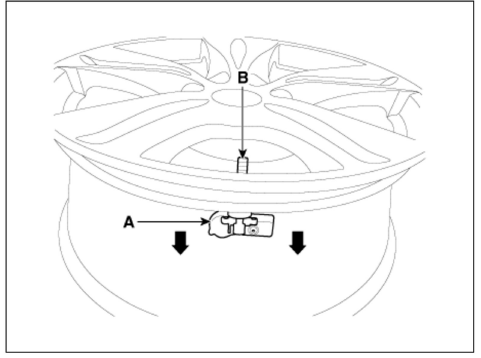
- Remove the valve using the valve mounting tool.
WARNING
Do not reuse the snap-in type TPMS sensor.
(1) Cut the lubber at the bottom of valve with a knife.

(2) Use the valve mounting tool to pull out the valve until it is entirely out of the lower hole.

- Apply lubricant to the surface of the valve, and then mount it through the valve hole of the wheel.
WARNING
We recommend using regular soapy water as lubricant.

WARNING
- The TPMS sensor valve bottom is not properly sealed if it is
not fully mounted 011 the wheel, as shown in the
following figure:

- Make sure that the valve body is pulled
entirely through the hole.
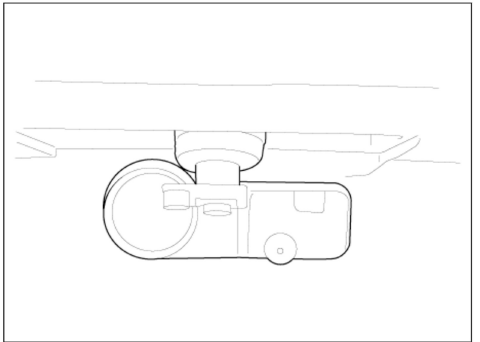
- Apply soapy water or lubricant to the upper/lower bead section of the tire.
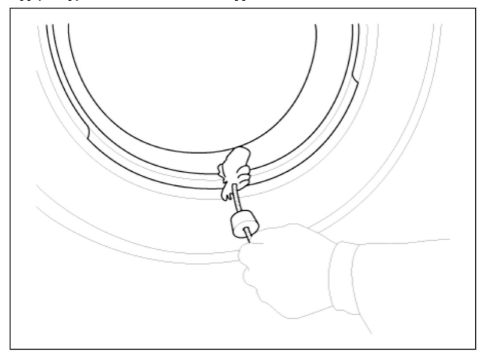
- In order to mount lower the beads, place the TPMS sensor at 5 o'clock, starting from the head of the tire replacement equipment.
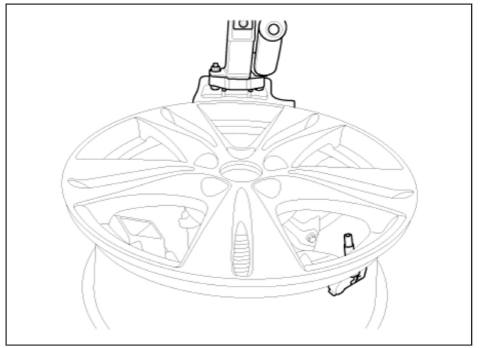
- Rotate the rim clockwise and press tire towards 3 o'clock to mount the lower beads.
WARNING
Mount the tire on the wheel. Make sure that the beads touch the edge of the rim behind the sensor (towards 6 o'clock).

- In order to mount the upper beads, press the tire towards 3 o'clock and turn the rim clockwise.

- Inject air into the tire until the beads are in the correct position.
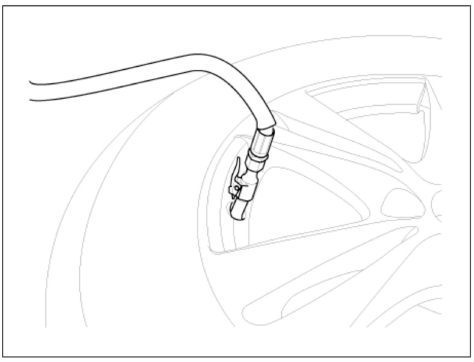
- Adjust the tire pressure according to the recommended tire pressure for the vehicle.
- If the TPMS sensor malfunctions, you must perform TPMS sensor learning. Replace any faulty sensors and perform TPMS sensor learning.
READ NEXT:
 Diagnostic Procedure Using a Diagnostic
Diagnostic Procedure Using a Diagnostic
Instrument
The following section describes how to diagnose faults using a diagnostic
instrument.
Connect the diagnostic instalment to the self-diagnostic connector
(16-pin) beneath the crash pad on the side of driver's
seat, and then
 TPMS Receiver : BCM(body control module) integrated management
TPMS Receiver : BCM(body control module) integrated management
Description
Mode
(1) Virgin State
The receiver as a sole part is shipped in this state. Replacement parts
should therefore arrive
in this state.
In this state, there is no Auto-Location, no sensor wake-up, no sensor
monitorin
 ECS (Electronic Control Suspension) System
ECS (Electronic Control Suspension) System
Description
Real-time continuous control of the damping force according to vehicle
running conditions and the
state of road surface will enhance ride comfort and steering safety, including
roll / pitch reduction in
case of vehicle dynamics con
SEE MORE:
 Forward Collision-Avoidance
Assist Malfunction and
Limitations
Forward Collision-Avoidance
Assist Malfunction and
Limitations
Forward Collision-Avoidance Assist malfunction
When Forward Collision-Avoidance
Assist is not working properly, the 'Check
Forward Safety system (s)' warning
message will appear, and the and
warning lights will illuminate on the
cluster.
 ESC Bleeding of Brake System
ESC Bleeding of Brake System
This procedure should be followed to ensure adequate bleeding of air and
filling of the ESC unit, brake lines and master cylinder
with brake fluid.
Connect the brake fluid filler to the reservoir tank.
WARNING
Do not reuse the drained f
Information
- Home
- Hyundai Tucson - Fourth generation (NX4) - (2020-2023) - Owner's Manual
- Hyundai Tucson - Fourth generation (NX4) - (2020-2023) - Workshop Manual